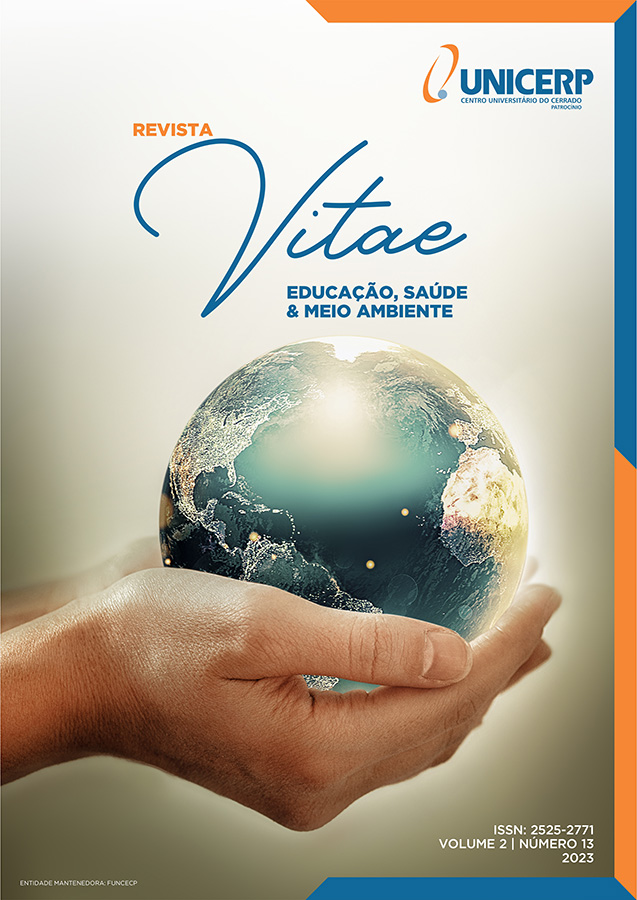[ID 197] PLAYFUL TECHNIQUES AND METHODOLOGIES FOCUSING ON ATTENTION AND UNDERSTANDING KNOWLEDGE
Keywords:
learning, children, development, playfulnessAbstract
INTRODUCTION: The ludic can provide great contributions to the child's life around the development of their learning. It can be worked in a diversified way, resulting in attractive classes, as there are several possibilities and forms of play. In these moments, children interact while acquiring learning.
OBJECTIVE: To highlight the ludic tools that are explored within the classroom to meet the greatest needs of children in relation to ludic activities. METHODS: The research was carried out through a bibliographic survey, of a qualitative nature, through the search for theoretical data in books, scientific articles and e-books.
RESULTS: It was observed that the ludic development is a consequence of the imagination that was stimulated through learning, related to aspects experienced in childhood. In this way, it is understood that children develop their skills through all the demands learned during classes and contents that become attractive and relevant for the use of playfulness.
CONCLUSION: The main and most important aspect related to the child's performance process, around the playful instruments, is the act of playing, as it enables and brings great learning contributions related to the concepts of school skills. In short, the need to contribute through appropriate environments and other activities that involve playfulness factors, facilitates and improves the development and understanding of children in relation to the acquisition of new knowledge about the didactics explored in the school environment.
References
ALMEIDA, P. N. de. Educação lúdica: técnicas e jogos pedagógicos. 9. ed. São Paulo: Loyola, 1981.
ARAGÃO, Janaina de Souza. Metodologia e Conteúdos Básicos de Comunicação e Artes. Indaial: Ed ASSELVI, 2007.
BACICH, L.; MORAN, J. (Orgs.) Metodologias ativas para uma educação inovadora: uma abordagem teórico-prática. Porto Alegre: Penso, 2018.
BROUGÈRE, G.B. Brinque e Cultura. São Paulo: Cortez, 1994.
CHATEAU, Jean. O jogo e a criança. São Paulo: Ed. Summus. 1987.
FAZENDA, I. (Org.). Dicionário em construção: interdisciplinaridade. 2. ed. São Paulo: Cortez, 2002.
GIL, Antonio Carlos. Como elaborar projetos de pesquisa. 4ª. Ed. São Paulo: Atlas, 2007.
GOMES, C. Brinco, logo existo: o papel da ludicidade na educação escolar. In: GRANDO, B. (Org.). Corpo, educação e cultura: práticas sociais e maneiras de ser. Ijuí: Unijuí, 2009. p. 111-118
KISHIMOTO, Tizuko Morchida (org.). Jogo, brinquedo, brincadeira e a educação. São Paulo, Cortez, 1996
________. Jogos tradicionais infantis do Brasil. São Paulo: Feusp, 1992.
KISHIMOTO, Tizuko Morchida. Jogos, brinquedose brincadeiras do Brasil. Disponível, 2014.
MORAN, J. Mudando a educação com metodologias ativas. In: SOUZA, C.; MORALES, O. (Orgs.). Convergências midiáticas, educação e cidadania: aproximações jovens (Coleção Mídias Contemporâneas.), v. 2. Ponta Grossa: UEPG/PROEX, 2015. p. 15-33
MOYLES, Janet R. Só brincar? O papel do brincar na educação infantil. Porto alegre: Artmed, 2002.
PIAGET, J. (1946). A Formação da Simbologia na Criança. Rio de Janeiro: Zahar, 31 1978.
PIRES, Gisele Brandelero Camargo. Lúdico e Musicalidade na Educação Infantil. Indaial: Ed. ASSELVI, 2008.
VYGOTSKY, L.S. A formação social da mente. São Paulo: Martins Fontes, 1984.
VOLPATO, G. Jogo, brincadeira e brinquedo: usos e significados no contexto escolar e familiar. Florianópolis: Cidade Futura, 2002.
ZABALZA, Miguel A. Qualidade em educação infantil. Trad. Beatriz Affonso Neves. Porto Alegre, Editora Artmed, 1998.
Downloads
Published
How to Cite
Issue
Section
License
Copyright (c) 2023 Revista Vitae Educação, Saúde & Meio Ambiente

This work is licensed under a Creative Commons Attribution 4.0 International License.
Todos os direitos autorais dos artigos publicados pertencem à Revista Vitae - Educação, Saúde & Meio Ambiente do UNICERP.
Os trabalho são originais e não estão disponíveis em outras publicações, quer seja no formato impresso ou no eletrônico.
A Revista se reserva o direito de efetuar nos originais alterações de ordem normativa, ortográfica e gramatical com vistas a manter o padrão culto da língua, respeitando, contudo, o estilo dos autores e que os originais não serão devolvidos aos autores.
Este trabalho está licenciado sob uma licença Creative Commons Attribution 4.0 International License (CC BY 4.0).







